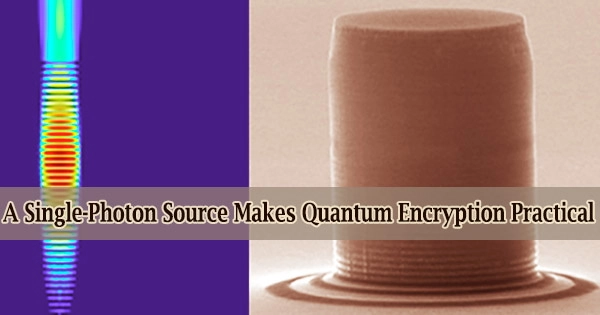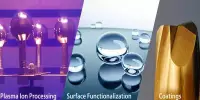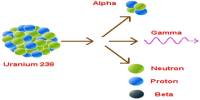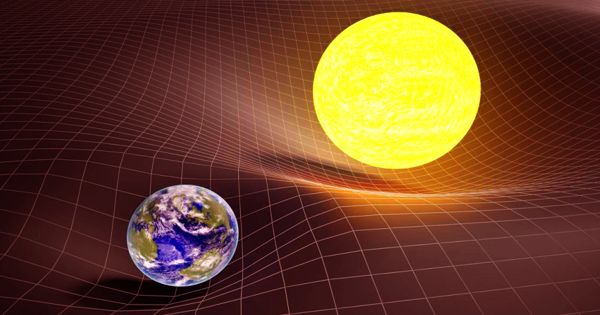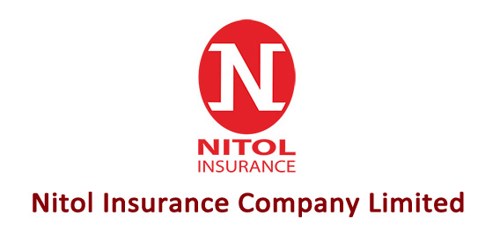A novel high-purity single-photon source that can function at ambient temperature has been developed by researchers. The source represents a significant step toward real quantum applications including extremely secure communication based on quantum key distribution (QKD).
“We developed an on-demand way to generate photons with high purity in a scalable and portable system that operates at room temperature,” said Helen Zeng, a member of the research team from the University of Technology Sydney in Australia.
“Our single-photon source could advance the development of practical QKD systems and can be integrated into a variety of real-world quantum photonic applications.”
Quantum encryption is simply the mathematics of cryptography combined with quantum mechanics to create unpredictable crypto keys. There are two major quantum encryption approaches that both aim to create real random keys at the endpoints and eliminate the need to distribute them to senders and recipients.
The first makes use of the quantum qualities of light transmitted across a dedicated fiber-optic channel to establish key agreement between two communication parties.
The second method makes use of the real uncertainty of quantum measurements to build a large pool of cloud-accessible random integers that are uniquely mixed in software at endpoints to create keys.
Both methods separate the data and software used for encryption, which provides an inherent security advantage over older methods.
Zeng and colleagues from Australia’s University of New South Wales and Macquarie University report their new single-photon source in the Optica Publishing Group journal Optics Letters, demonstrating that it can create over ten million single photons per second at ambient temperature. They also built a fully portable system that can perform QKD using the single-photon source.
Most approaches used to improve hexagonal boron nitride single-photon sources rely on precisely positioning the emitter or using nano-fabrication. This makes the devices complex, difficult to scale, and not easy to mass produce.
Helen Zeng
The novel single-photon source combines a 2D material called hexagonal boron nitride with an optical component termed a hemispherical solid immersion lens, resulting in a six-fold boost in efficiency.
Single photons at room temperature
QKD provides impenetrable data encryption by generating safe random keys for encrypting and decrypting data using the quantum characteristics of light. Sources that emit light as a string of single photons are required for QKD devices.
However, most single-photon sources currently perform poorly unless they are operated at cryogenic temperatures hundreds of degrees below zero, limiting their utility.
Although hexagonal boron nitride has previously been utilized to construct a single-photon source that functions at ambient temperature, researchers have not been able to reach the efficiency required for practical use.
“Most approaches used to improve hexagonal boron nitride single-photon sources rely on precisely positioning the emitter or using nano-fabrication,” said Zeng. “This makes the devices complex, difficult to scale, and not easy to mass produce.”
Zeng and colleagues set out to improve the approach by focusing the photons originating from the single-photon emitter with a solid immersion lens, allowing more photons to be detected. These lenses are readily available and simple to make.
The researchers created a QKD system by combining their new single-photon generator with a custom-built portable confocal microscope that can analyze single photons at ambient temperature.
The single-photon source and confocal microscope are contained in a sturdy container measuring 500 × 500 millimeters and weighing roughly 10 kg. The system is also designed to handle vibration and stray light.
“Our streamlined device is easier to use and much smaller than traditional optical table setups, which often take up entire labs,” said Zeng. “This allows the system to be used with a range of quantum computing schemes. It could also be adapted to work with existing telecommunications infrastructure.”
Demonstrating quantum cryptography
The new single-photon source demonstrated that it could gather single photons at a rate of 107 Hz while maintaining high purity, implying that each pulse had a minimal chance of carrying more than one photon.
It also shown outstanding stability over a long period of time. The researchers also proved the system’s ability to perform QKD in real-world scenarios, demonstrating that secured QKD with 20 MHz repetition rates could be done over several kilometers.
The researchers now plan to evaluate the device’s reliability, stability, and efficiency during encryption now that they’ve provided proof that it can execute complicated quantum cryptography. They also intend to use the new source to execute QKD outside of the lab, rather than in it.
“We are now ready to transform these scientific advances in quantum 2D materials into technology ready products,” said Igor Aharonovich, who led the project.
